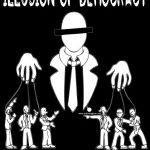 March 18 (Bloomberg) — Federal Reserve policy makers will likely determine today that the U.S. recession is still deepening, while clashing on what to do about it.
March 18 (Bloomberg) — Federal Reserve policy makers will likely determine today that the U.S. recession is still deepening, while clashing on what to do about it.
Officials will debate how to provide further stimulus to the economy, from purchasing more mortgage bonds to buying Treasury securities. They’ll also keep the benchmark interest rate as low as zero percent, according to all 71 forecasters in a Bloomberg News survey.
At least three of the 17 top Fed officials want to buy Treasuries or target the supply of money, while Chairman Ben S. Bernanke has favored reviving specific credit markets. Central banks worldwide are grappling with how to set policy when rates are near zero; the Bank of England started buying government debt this month, and the Bank of Japan said today it would increase its purchases of sovereign bonds.
“There are big philosophical differences” among Fed policy makers, said Ethan Harris, co-head of economic research at Barclays Capital Inc. “Bernanke is on the very activist side, believing in active, aggressive policies. There are others who think policies should be much more limited, with minimal disruption in the operations of the free market.”
The Fed’s Open Market Committee began the second day of a two-day meeting at about 9 a.m. and is scheduled to issue its statement around 2:15 p.m. in Washington.
The Fed staff, in preparation for the FOMC meeting, probably downgraded its economic forecasts from the prior meeting on Jan. 28, when policy makers predicted unemployment would peak in the fourth quarter as low as 8.5 percent.
Bernanke Warned
Bernanke warned last week the jobless rate may rise beyond 10 percent. His comment underscores the need for the Fed to step up purchases of assets and begin reversing the $400 billion contraction in its balance sheet since December, analysts said.
According to the “Taylor Rule” devised by Stanford University Professor John Taylor suggesting how a central bank should set interest rates if inflation or growth veer from goals, the need for stimulus would justify cuts in the federal funds rate by the end of 2009 to minus 7.5 percent, Laurence Meyer, vice chairman of Macroeconomic Advisers, said in a note to clients. Such a move is logistically impossible.
“We know we need more stimulus,” said Stanford University economist Robert Hall, who heads the National Bureau of Economic Research’s committee that dates the start and end of U.S. recessions. The Fed would “stimulate spending” by expanding its purchases of privately sold assets like housing agency securities, he said. “So we should push in this direction until we get the economy moving again.”
The FOMC statement may highlight the increased risks to the economy following the loss of 651,000 jobs in February, bringing the total since the recession began to 4.4 million.
‘Downside Risks’
“There will be downward revision in growth and an increase in the downside risks,” said Mark Gertler, a New York University economist and research co-author with Bernanke. “The wording will be expand the balance sheet as necessary to moderate credit conditions. They will suggest they will be very aggressive.”
Policy makers have disagreed on just how to be more aggressive. They have at least three options: increase the $1 trillion Term Asset-Backed Securities Loan Facility aimed at restoring consumer and business lending; expand purchases of mortgage-backed securities and agency securities; or begin purchasing long-term Treasuries.
Third Option
The argument for the third option gained ground with “the success the Bank of England has had in lowering long-term rates” by purchasing U.K. government bonds known as gilts in a program announced this month, said Lyle Gramley, a former Fed governor.
The 10-year gilt yield slid to the lowest level in at least 20 years after the Bank of England started buying gilts in a “quantitative easing.” The policy is intended to reduce interest rates and help pull the economy from its first recession in 17 years.
In Japan, 10-year bonds yields fell to the lowest in more than a week after the central bank said it would increase its monthly purchases of government debt to 1.8 trillion yen ($18.3 billion) from 1.4 trillion yen now.
Richmond Fed Bank President Jeffrey Lacker and Philadelphia Fed President Charles Plosser have urged the Fed to preserve neutrality and leave credit programs to the U.S. Treasury Department. Lacker dissented at the FOMC meeting in January, preferring to expand the balance sheet with purchases of Treasury securities.
Monetary Base
St. Louis Fed President James Bullard said in a Feb. 17 speech that policy makers should avert deflation by increasing the monetary base, the total money in circulation plus reserve deposits at central banks. He distinguished between such efforts and the Fed’s emergency programs expanding liquidity.
Bernanke, Vice Chairman Donald Kohn and a majority of the FOMC have said some help to markets for consumer and auto loans and other credit markets is essential for reviving investor demand.
The so-called TALF “should still provide substantial support to auto loans, and therefore to help the customers of the auto companies to be able to purchase vehicles,” Bernanke said Feb. 25 to the House Financial Services Committee.
That program is off to a slow start. Last week, the Fed delayed by two days until tomorrow the deadline for submissions of proposed packages of debt that investors can buy with Fed financing. Brokers and investors have had difficulty agreeing over contract terms, according to participants in the preparations.
That could leave increased purchases of mortgage-backed securities as an attractive option, said Robert Mellman, an economist at JPMorgan Securities Inc. in New York.
Steve Matthews
sursa: http://www.bloomberg.com












Adauga comentariu